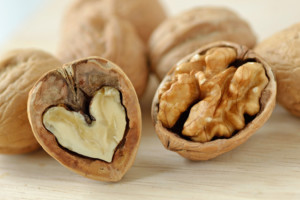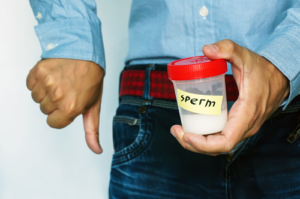How to improve sperm quality?
Sperm quality can be affected by several factors, such as the environment, diseases, lifestyle, age, etc. Those related to men’s lifestyle are the easiest to modify when trying to improve sperm quality in terms of concentration, motility, fragmentation and even epigenetics, as described previously in this blog section.
Several studies have assessed the effect of weight on the quality of the sperm. On the one hand, overweight and ovesity have been shown to be directly associated with an increased prevalence of azoospermia or oligozoospermia (Sermondade et al., 2013).

https://www.menshealth.com/
Another publication in 2017, performed with Microptic’s Computer Assisted Sperm Analysis (CASA) system, studied the relationship between obesity and sperm quality in infertile men, and correlated obesity with poorer quality sperm samples in terms of volume, sperm count, motility and morphology (Ramaraju et al., 2018). Likewise, there is also evidence that underweight is associated with lower sperm quality (Ma et al., 2019). These findings emphasize the importance that maintaining an adequate weight may have in our reproductive health.
Other studies have also associated an adherence to a healthy diet with improved sperm quality (Salas-Huetos et al., 2019).
For example, increased sperm motility was found in men following a Mediterranean diet, characterized by a high consumption of olive oil, fruit, nuts, legumes, vegetables and whole cereals; a moderate intake of fish, poultry and wine; and a low consumption of dairy products, red meat, processed meats, and sweets.

Foods with a high percentage of fiber and antioxidants such as fruit, vegetables, nuts, legumes and whole cereals, also play a role in sperm quality. Antioxidants can act as sperm reactive oxygen species (ROS) regulators reducing sperm DNA damage and increasing sperm motility and vitality. This can be seen in some studies which have shown that increased intake of selenium and zinc have beneficial effects on sperm concentration, total sperm motility and morphology (Salas-Huetos et al., 2019).
Nuts, fish and seafood have been extensively investigated due to their high content in fatty acids. It has been observed that consuming these fatty acids or their food sources modifies the sperm cell membrane, appearing to have a positive effect on spermatogenesis and sperm quality (Nassan et al., 2018).
There is also some research indicating that high consumption of food included in western diets, such as processed meat, alcohol, sugar-sweetened beverages (SSB) and sweets are detrimental to sperm quality. As an example, this study from 2014 showed that the intake of SSB is inversely correlated with sperm motility among young healthy men, and this association was confined to lean men (Chiu et al., 2014).
Another interesting factor, usually related to diet, is physical activity. This study by Lalinde-Acevedo et al. in 2017 found differences in conventional sperm parameters (total sperm motility, progressive motility and % of viable sperm) between a physically active group (PAG) and a sedentary group (SG) of men. Results showed that these parameters were better in PAG, which favours the maintenance of an active lifestyle. Other studies have also reported improvements in sperm concentration and morphology in men following a moderate to vigorous physical active lifestyle when compared to sedentary behaviour (Lalinde-Acevedo et al., 2017). Even so, we shouldn’t forget that continuous high intensity physical activity has also been related to increased sperm DNA fragmentation and may negatively affect fertility outcomes (Tartibian & Maleki, 2012; Vaamonde et al., 2018).

Our lifestyles are not only based on what we eat or whether we are a sedentary person. There are some toxic activities or other habits that have a high prevalence in our population.
Many studies have found that cigarette smoking affects semen analysis outcomes in infertile men, apparently in a dose dependent way. Therefore, even “light” smokers appeared to be at risk for adverse effects on their fertility. (Kovačič et al., 2010)
Another example is alcohol, which is already considered part of the western diet but due to its elevated intake, it deserves more attention. Several studies have found decreased semen volume, sperm count, sperm motility and normal morphology related to alcohol consumption, although it is difficult to determine which threshold of alcohol dose has an impairment in semen quality (Muthusami & Chinnaswamy, 2005). However, a study by Jensen et al. in 2014 suggested a reduction in semen quality in men with an alcohol intake of more than 5 units per week, which got more pronounced with an intake above 25 units per week (Jensen et al., 2014).
More studies are needed to confirm all the factors that affect sperm quality and by which mechanisms. Whether and how semen quality is restored if a healthy lifestyle is adopted remains unknown. Nevertheless, men and couples that are undergoing fertility treatments or wish to conceive should be advised about which factors may affect their reproductive health.
Mònica Acacio, MSc
Embryotools
References:
Chiu, Y. H., Afeiche, M. C., Gaskins, A. J., Williams, P. L., Mendiola, J., Jorgensen, N., Swan, S. H., & Chavarro, J. E. (2014). Sugar-sweetened beverage intake in relation to semen quality and reproductive hormone levels in young men. Human Reproduction, 29(7), 1575–1584. https://doi.org/10.1093/humrep/deu102
Jensen, T. K., Gottschau, M., Madsen, J. O. B., Andersson, A. M., Lassen, T. H., Skakkebæk, N. E., Swan, S. H., Priskorn, L., Juul, A., & Jørgensen, N. (2014). Habitual alcohol consumption associated with reduced semen quality and changes in reproductive hormones; a cross-sectional study among 1221 young Danish men. BMJ Open, 4, 1–9. https://doi.org/10.1136/bmjopen-2014-005462
Kovačič, B., Sajko, M. Č., & Vlaisavljević, V. (2010). A prospective, randomized trial on the effect of atmospheric versus reduced oxygen concentration on the outcome of intracytoplasmic sperm injection cycles. Fertility and Sterility, 94(2), 511–519. https://doi.org/10.1016/j.fertnstert.2009.03.077
Lalinde-Acevedo, P. C., Jose Manuel Mayorga-Torres, B., Agarwal, A., Du Plessis, S. S., Ahmad, G., Cadavid, Á. P., & Cardona Maya, W. D. (2017). Physically active men show better semen parameters than their sedentary counterparts. International Journal of Fertility and Sterility, 11(3), 156–165. https://doi.org/10.22074/ijfs.2017.4881
Ma, J., Wu, L., Zhou, Y., Zhang, H., Xiong, C., Peng, Z., Bao, W., Meng, T., & Liu, Y. (2019). Association between BMI and semen quality: An observational study of 3966 sperm donors. Human Reproduction, 34(1), 155–162. https://doi.org/10.1093/humrep/dey328
Muthusami, K. R., & Chinnaswamy, P. (2005). Effect of chronic alcoholism on male fertility hormones and semen quality. Fertility and Sterility, 84(4), 919–924. https://doi.org/10.1016/j.fertnstert.2005.04.025
Nassan, F. L., Chavarro, J. E., & Tanrikut, C. (2018). Diet and men’s fertility: does diet affect sperm quality? Fertility and Sterility, 110(4), 570–577. https://doi.org/10.1016/j.fertnstert.2018.05.025
Ramaraju, G. A., Teppala, S., Prathigudupu, K., Kalagara, M., Thota, S., Kota, M., & Cheemakurthi, R. (2018). Association between obesity and sperm quality. Andrologia, 50(3), 1–12. https://doi.org/10.1111/and.12888
Salas-Huetos, A., Babio, N., Carrell, D. T., Bulló, M., & Salas-Salvadó, J. (2019). Adherence to the Mediterranean diet is positively associated with sperm motility: A cross-sectional analysis. Scientific Reports, 9(1), 1–8. https://doi.org/10.1038/s41598-019-39826-7
Salas-Huetos, A., James, E. R., Aston, K. I., Jenkins, T. G., & Carrell, D. T. (2019). Diet and sperm quality: Nutrients, foods and dietary patterns. Reproductive Biology, 19(3), 219–224. https://doi.org/10.1016/j.repbio.2019.07.005
Sermondade, N., Faure, C., Fezeu, L., Shayeb, A. G., Bonde, J. P., Jensen, T. K., Van Wely, M., Cao, J., Martini, A. C., Eskandar, M., Chavarro, J. E., Koloszar, S., Twigt, J. M., Ramlau-Hansen, C. H., Borges, E., Lotti, F., Steegers-Theunissen, R. P. M., Zorn, B., Polotsky, A. J., … Czernichow, S. (2013). BMI in relation to sperm count: An updated systematic review and collaborative meta-analysis. Human Reproduction Update, 19(3), 221–231. https://doi.org/10.1093/humupd/dms050
Tartibian, B., & Maleki, B. H. (2012). Correlation between seminal oxidative stress biomarkers and antioxidants with sperm DNA damage in elite athletes and recreationally active men. Clinical Journal of Sport Medicine, 22(2), 132–139. https://doi.org/10.1097/JSM.0b013e31823f310a
Vaamonde, D., Algar-Santacruz, C., Abbasi, A., & García-Manso, J. M. (2018). Sperm DNA fragmentation as a result of ultra-endurance exercise training in male athletes. Andrologia, 50(1), 1–6. https://doi.org/10.1111/and.12793



Leave A Comment